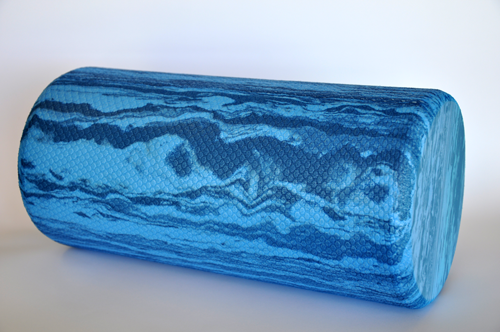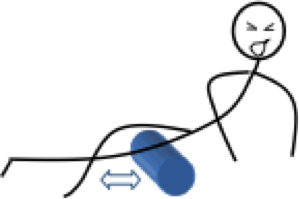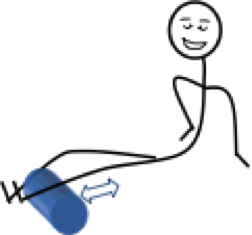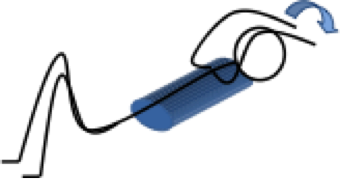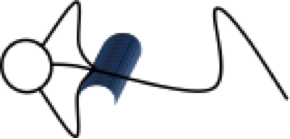What is a Foam Roller?
It is an effective and cheap way to release myofascial tightness, ideal for self massage and rehabilitation. It can help deactivate large trigger points in your back, glutes and legs.
How do I use a Foam Roller?
Use your body weight to apply pressure to the sore spots over your body for 30-60 seconds. These sore spots will eventually desensitise over time. You will find yourself moving much more fluently and efficiently after regular use.
Where can I buy a Foam Roller?
Foam rollers can be purchased from one of our Jubilee Sports Physiotherapy clinics.
What Stretches can I do on a Foam Roller?
ITB Rolls
Lay on the roller so that the roll sits under the side of the leg, just below the hip joint. Support the weight of your body on your hands, and opposite leg (which is either crossed out in front of or rested on top of the leg on the roll). This exercise helps loosen up your Iliotibial Band (ITB), which runs down the outside of your leg from your hip to your knee. Roll back and forth from below the hip until just above the knee.
TFL Rolls
Lay on your side so that the roller is placed just above the hip joint (NOT on the hip joint). The tensor fasciae latae (TFL) is a muscle that runs from the hip to the top of the pelvis. You will not have to roll much with this exercise, as it is a small muscle. If you set the roller just above the bony part of the hip and below the pelvis you should be in the location of the TFL.
Quad Rolls
Lay face down on your elbows with the roller under your quadriceps (the front of your upper leg). Roll from the bottom of your pelvis to above your knee. (NOT over your knee!).
Calf Rolls
Support your weight with your hands on the floor and one calf on the roller. Do not sit on the floor. Using your upper body roll from your heel to the top of your calf.
Chest Stretch
Sit on one end of the roller and then lay back. Your head should be resting on the roller and your knees should be bent with your feet flat on the floor shoulder width apart to provide balance. Bring both arms up in front of you and bend both elbows to 90 degrees, forearms will be parallel to the ground. Keeping your elbows bent, open your arms out to the sides and relax. Let gravity stretch the muscles of your chest and shoulders.
Back Stretch
Sit on one end of the roller and lay back so that your head is supported on the roller, and your spine is in line with the roller. Bend knees to provide balance. Bring your arms straight up so that they are pointing towards the ceiling. Now drop your arms over your head and allow gravity to cause a stretch. This will stretch your latissimus dorsi muscles and help extend your thoracic spine.
Thoracic Mobility Stretch
Lay on the roller so that your spine is perpendicular with the roll, bend knees and lift hips off ground while maintaining a flat body position. Roll back and forth from the top of the shoulders (NOT on the neck) down to the bottom of the rib cage. This exercise will help improve the mobility of the thoracic spine by encouraging movement in each segment.
IMPORTANT TO REMEMBER …
If you start to experience pain that does not subside or increases following use of the foam roller please do not continue with these exercises until you have spoken with one of our physiotherapists.
If you have had or currently have a back injury it is best to consult one of our physiotherapists before commencing any of these exercises.
If you have any other questions regarding this information or your physiotherapy management, please don’t hesitate to contact Jubilee Sports Physiotherapy.

